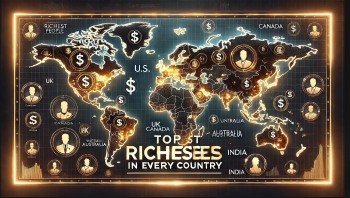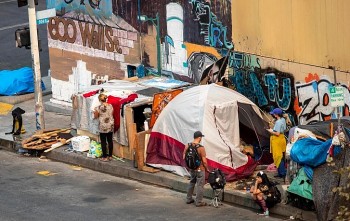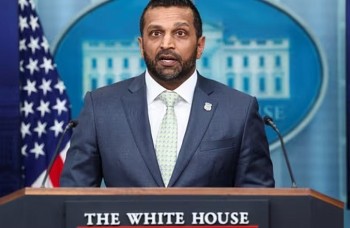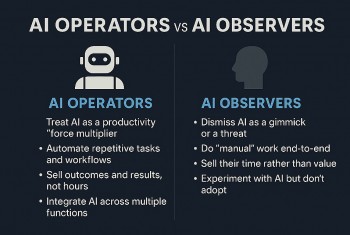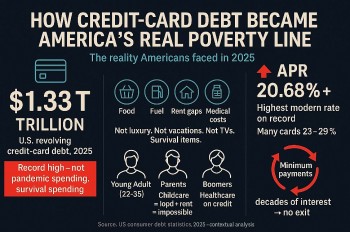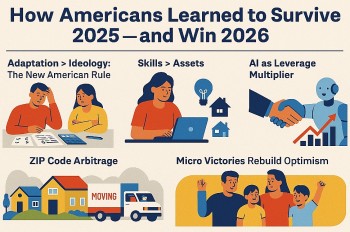Trump’s Reciprocal Tariffs: Full List of Affected Countries
 Top 10 Largest Automakers with the Factory in the U.S. - American-Made Cars Top 10 Largest Automakers with the Factory in the U.S. - American-Made Cars |
 Is Any Car Really 100% American? The Real Story Behind “American-Made” Cars Is Any Car Really 100% American? The Real Story Behind “American-Made” Cars |
 |
| Full Country List Impacted by Trump’s New Tariff Policy |
U.S. President Donald Trump declared the implementation of a minimum 10% tariff on all exports entering the United States. But the announcement didn’t stop there. Trump also revealed steep additional tariffs targeting approximately 60 countries with the most significant trade imbalances with the U.S.
The higher “reciprocal” tariffs will specifically hit what the Trump administration calls “the worst offenders”—countries that impose heavy tariffs and non-tariff barriers on American products. The formula for these retaliatory duties is based on detailed U.S. government data on foreign tariff structures and trade restrictions.
How Trump's New Tariff Plan Works
According to Trump’s two-step plan:
1. The U.S. government will calculate the total average tariff and trade barriers each country imposes on American goods.
2. The U.S. will then apply a reciprocal tariff equal to roughly 50% of that figure on imports from the same country.
For example: If a country is estimated to levy an average 60% tariff (including both taxes and non-tariff barriers) on U.S. goods, Trump’s administration will impose a 30% tariff on goods imported from that country into the U.S.
Key Countries Affected by Trump's Reciprocal Tariffs
Based on internal White House documents, here are the reciprocal tariff rates that will be imposed:
-
Vietnam: 46%
-
China: 34%
-
European Union (EU): 20%
-
Japan: 24%
-
South Korea: 25%
-
India: 26%
-
Cambodia: 49%
-
Taiwan: 32%
These rates are in addition to the baseline 10% global tariff, which will take effect at 12:01 AM on April 5 (U.S. time). The higher reciprocal tariffs will be implemented at 12:01 AM on April 9.
Canada and Mexico Exempted – But Existing Tariffs Remain
Interestingly, Canada and Mexico—two of America’s largest trading partners—will not be subject to the new reciprocal tariff structure. However, both countries will continue to face a 25% tariff already in place, justified by national security concerns related to drug trafficking and illegal immigration.
Trump also confirmed that exemptions granted under the USMCA (United States–Mexico–Canada Agreement) will remain intact for specific protected goods.
Market Reaction: Wall Street Feels the Shock
The announcement sent shockwaves through global financial markets. Futures for the S&P 500 Index dropped 1.9%, while Nasdaq 100 futures plunged 2.7% as traders reacted to the full scope of the trade measures.
The auto sector was among the hardest hit, with shares of Ford Motor Co., General Motors Co., Stellantis NV, and Tesla Inc. tumbling in after-hours trading on the New York Stock Exchange.
 Gold Holds Firm Above $3,130 as Trump’s Tariff Shock Sparks Market Jitters Gold Holds Firm Above $3,130 as Trump’s Tariff Shock Sparks Market Jitters |
Which Countries Are Hit by Trump’s Reciprocal Tariffs? Complete Breakdown
Below is the official list of countries and corresponding sectors that are expected to be impacted by the United States' new reciprocal tariff policy.
China - 34%
European Union - 20%
Vietnam - 46%
Taiwan - 32%
Japan - 24%
India - 26%
South Korea - 25%
Thailand - 36%
Switzerland - 31%
Indonesia - 32%
Malaysia - 24%
Cambodia - 49%
United Kingdom - 10%
South Africa - 30%
Brazil - 10%
Bangladesh - 37%
Singapore - 10%
Israel - 17%
Philippines - 17%
Chile - 10%
Australia - 10%
Pakistan - 29%
Turkiye - 10%
Sri Lanka - 44%
Colombia - 10%
Peru -10%
Nicaragua - 18%
Norway - 15%
Costa Rica - 10%
Jordan - 20%
Dominican Republic - 10%
United Arab Emirates - 10%
New Zealand - 10%
Argentina - 10%
Ecuador - 10%
Guatemala - 10%
Honduras - 10%
Madagascar - 47%
Myanmar (Burma) - 44%
Tunisia - 28%
Kazakhstan - 27%
Serbia - 37%
Egypt - 10%
Saudi Arabia - 10%
El Salvador - 10%
Côte d’Ivoire - 21%
Laos - 48%
Botswana - 37%
Trinidad and Tobago - 10%
Morocco - 10%
Algeria - 30%
Oman - 10%
Uruguay - 10%
Bahamas - 10%
Lesotho - 50%
Ukraine - 10%
Bahrain - 10%
Qatar - 10%
Mauritius - 40%
Fiji - 32%
Iceland - 10%
Kenya - 10%
Liechtenstein - 37%
Guyana - 38%
Haiti - 10%
Bosnia and Herzegovina - 35%
Nigeria - 14%
Namibia - 21%
Brunei - 24%
Bolivia - 10%
Panama - 10%
Venezuela - 15%
North Macedonia - 33%
Ethiopia - 10%
Ghana - 10%
Trump Leaves Door Open for Negotiations
While U.S. President Donald Trump rolled out his toughest trade measures to date, he also signaled a willingness to negotiate. Speaking at the White House, Trump stated that he would consider reducing the new tariffs if other countries agree to eliminate trade barriers against American exports.
“I said: Drop your tariffs, tear down your barriers, and stop manipulating your currencies,” he emphasized.
To support this bold initiative, Trump declared a national emergency tied to the United States' record-breaking trade deficit, which soared to over $918 billion in goods and services in 2024. This declaration allows the president to invoke extraordinary powers under the International Emergency Economic Powers Act (IEEPA)—enabling him to impose what is now being called the most comprehensive tariff regime in generations.
A Historic Economic Gamble with Global Consequences
Economists warn that Trump’s tariff escalation is a high-stakes gamble with global repercussions. The new duties are expected to raise costs on trillions of dollars’ worth of goods imported annually into the U.S. More importantly, experts caution that this move could trigger a full-scale global trade war.
Potential ripple effects include:
-
Disruption of global supply chains, especially in manufacturing and technology.
-
Surging inflation as importers pass added costs on to consumers.
-
Economic retaliation from rival nations, potentially targeting key U.S. exports.
-
Formation of new global trade alliances that deliberately exclude the United States.
As the world braces for the fallout, one thing is clear: Trump’s aggressive trade policy marks a transformational shift in U.S. economic strategy, one that could redefine international commerce for decades to come.
 Wall Street Tumbles After Trump Tariffs Shock Markets: Apple, Tesla, Amazon Among Hardest Hit Wall Street Tumbles After Trump Tariffs Shock Markets: Apple, Tesla, Amazon Among Hardest Hit A new trade war looms, stocks nosedive, and investors brace for prolonged volatility. |










